Every car owner’s nightmare is a flat tire. Double that if you don’t have a spare tire around, and make it triple when you’re in an emergency. If you’re wondering how many miles you can squeeze on your flat tire. It’s 50 miles or 80.4 kilometers.
However, you should drive slowly on a flat tire since it doesn’t have much traction or durability. Not to mention the potential of an accident when driving with a flat tire damage.
If you still have lingering questions regarding how far can you drive on a flat tire. Read on to learn more.
Table of Contents
If you must drive with a popped tire then make sure that where you’re going is relatively near.
The limit is 50 miles just right after the tire got punctured. However, you must prepare for any potential damage to your car.
However, flat tires shouldn’t be driven long distances. You’ll risk damaging your vehicle more, notably the wheels, brakes, and other parts such as your suspension and steering system.
Damage to these vehicle systems can drastically reduce handling, not to mention repair costs.
It’s tempting to drive a short distance on a flat tire. However, it’s better to drive on a spare tire instead, provided you have one ready.
If you don’t have considerable damage to it, the puncture could potentially be plugged and save you the hassle and money of getting a new one.
Suppose you need to drive a short distance on a flat tire. Just make sure that you’re going slowly.

If you’re asking, “can I drive a flat tire 2 miles?” .5 more than the recommended distance. Technically you can, but you’ll have to be ready for additional vehicle damage.
Furthermore, the most significant scare would be traffic accidents. As your car mishandles, the chances of getting traffic accidents rise exponentially.
One unintentional turn or stoppage when you ride on a flat tire is a one-way ticket to disaster.
Spare tires are essential when you’re driving. Having one can save you the hassle of driving slowly yet dangerously as you go on a flat tire, not to mention that a spare tire is a requirement in most state traffic laws.
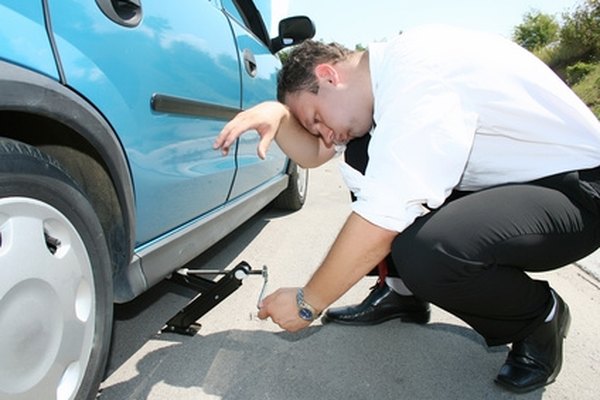
Luckily, this is a lot better than driving on a flat tire. The time and hassle of changing a flat tire are worth it.
Spare tires are, as the name suggests, a spare. When driving with one, ensure you find the right kind of wheels for your car as soon as possible. Not only would this dramatically improve your handling, but you’ll mitigate the risk of popping another tire, this time without a spare.
When replacing a flat tire with a spare, you must follow several steps to ensure safer and more efficient work. These steps apply to your front or rear tire.
Step 1: Make sure you pull over safelyIf you decide to change your tires instead of driving on, pull over on the safe side of the road.
Also, place a warning device to let oncoming traffic know you’re in a dire situation.
Step 2: Make sure you have tools and a spare tireYou’ll need at least three tools when changing a tire on your vehicle.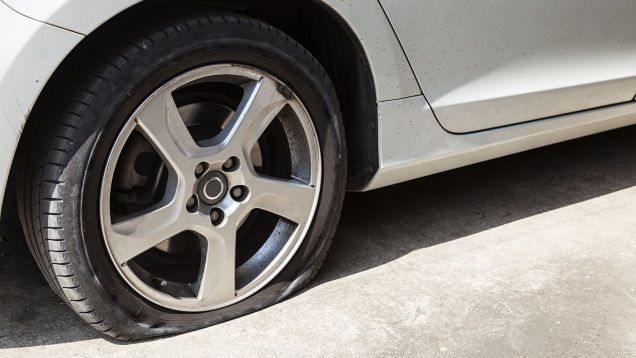
Additional tools can be:
Using a tire iron, loosen each lug nut on your wheels until you can easily turn them manually with your hands.
Step 4: Lift the vehicleRaise your car by placing the jack underneath the metal part of your vehicle. Avoid placing it under the plastic frame.
To best do this step, consider referring to your owner’s manual for additional assistance.
Step 5: Remove the tireCarefully remove your tire by removing the lug nuts. Ensure that the lug nuts are in a safe box. Then, pull the tire towards you to take it out.
Step 6: Place the spare tireCarefully place your spare tire, and using your hands, place the lug nuts, but don’t secure them just yet.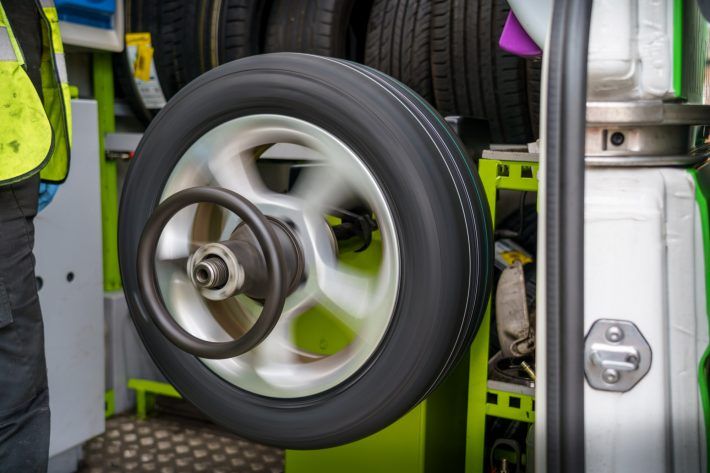
Lower your car and tighten the lug nuts while the tire slowly touches the ground.
Step 8: Ultimately, lower your vehicleLower your car and secure the lug nuts as tight as possible. You’re now ready to drive your vehicle.
I quickly looked through Reddit for some pro tips, and I saw that u/Grosse Fahrt advised that a donut spare can potentially damage the drivetrain if you place it on your drive axle. So a spare full-sized identical wheel is better to keep around.
There are many ways to prevent a flat tire, as prevention is better than cure. However, you must also be ready as even the most vigilant drivers can still have one, mainly due to wear and tear.
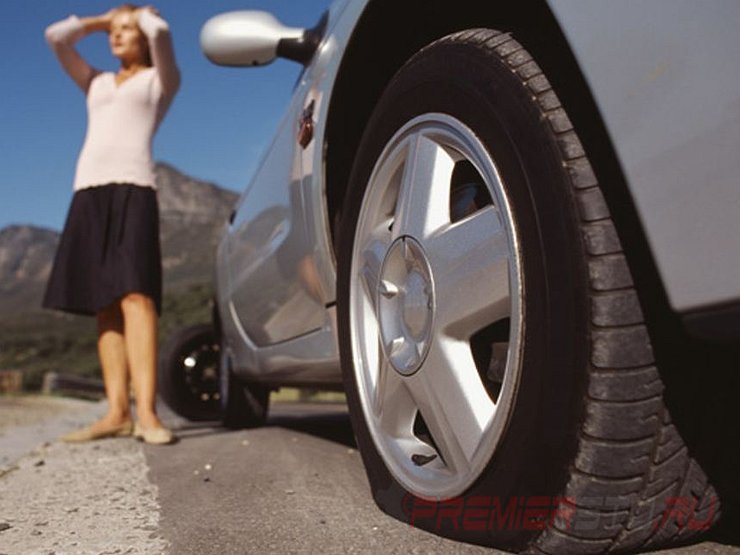
Most of us have driven on a flat tire at some point. Whether for a short period or longer, driving on a flat tire is never something you want to do.
Whether for a short period or longer, driving on a flat tire is never something you want to do.
Certain factors might cause you to drive with a flat tire, such as lack of spare tire, limited ability to change the tire along the way, etc.
Knowing “how far can you drive on a flat tire” will help you get out of the situation without damaging your vehicle or, most importantly, yourself if you are ever in this position.
Last modified by Ian Haynes
Every year, almost 220 million flat tires happen in the United States alone. This means that the average American will experience five flats or more in their lifetime – and since 20% of U.S. drivers do not know how to change a tire, this could spell trouble.
The only other course of action is to call a friend or get roadside assistance — but they might disappoint you and make you wait for a while.
But sometimes, you run a flat in the most inappropriate of places and help might take hours to arrive – so the only resort left is driving to the nearest workshop on a punctured tire.
However, experts don’t recommend this as it can damage the tire and render it completely useless. The chances are that you’ll never be able to use the tire again.
But if you must, make sure that help is no more than a few yards away and that you keep the speed steady when driving on a flat tire.
Tires either gradually deflate because of punctures or loose valves, or they blow out on-spot – in both scenario’s you need to get your tires back in shape promptly.
Anything below 20 PSI indicates a flat tire. If your TPM shows a PSI that’s dropping fast or if your tire has already blown out, react immediately and change the way your drive.
Make sure you drive no longer than 1.5 miles and go no faster than 20 mph – this is the only way to ensure that your tire has any hopes of surviving this disaster.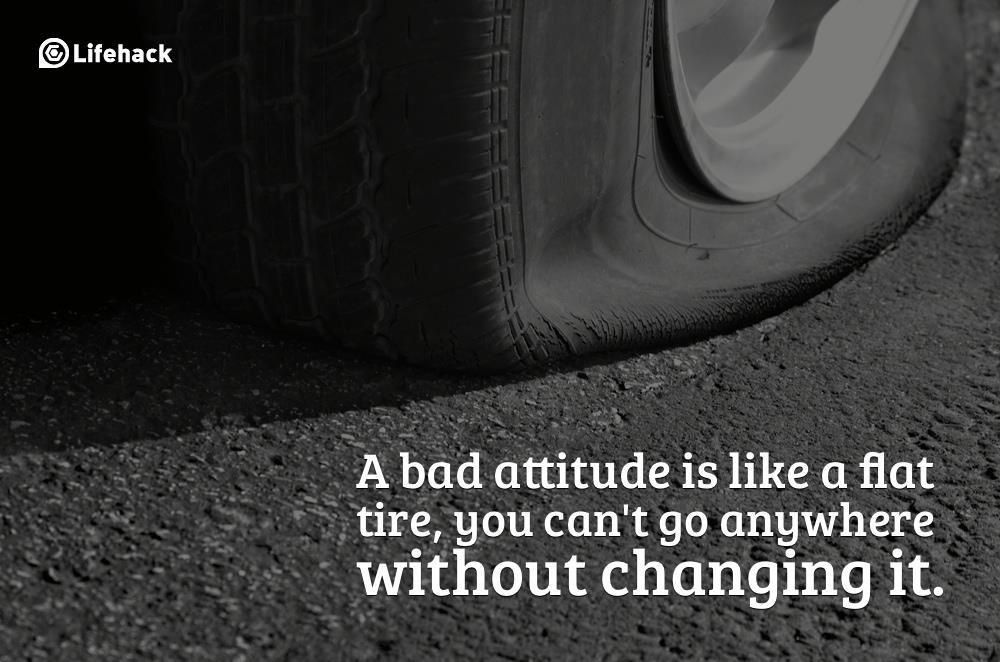
Here is a step-by-step guide on quickly making it to the nearest service station:
The rim puts extraordinary pressure on a flat tire when it’s being driven, and this damages the tire’s tread compound significantly. Here are some of the many reasons why it’s a bad call to drive on flat tires:
The Rims Get Damaged
If there is little to no pressure left in the tire, it can no longer shoulder the weight of a moving car, and the rims are left to bear the forces without any support.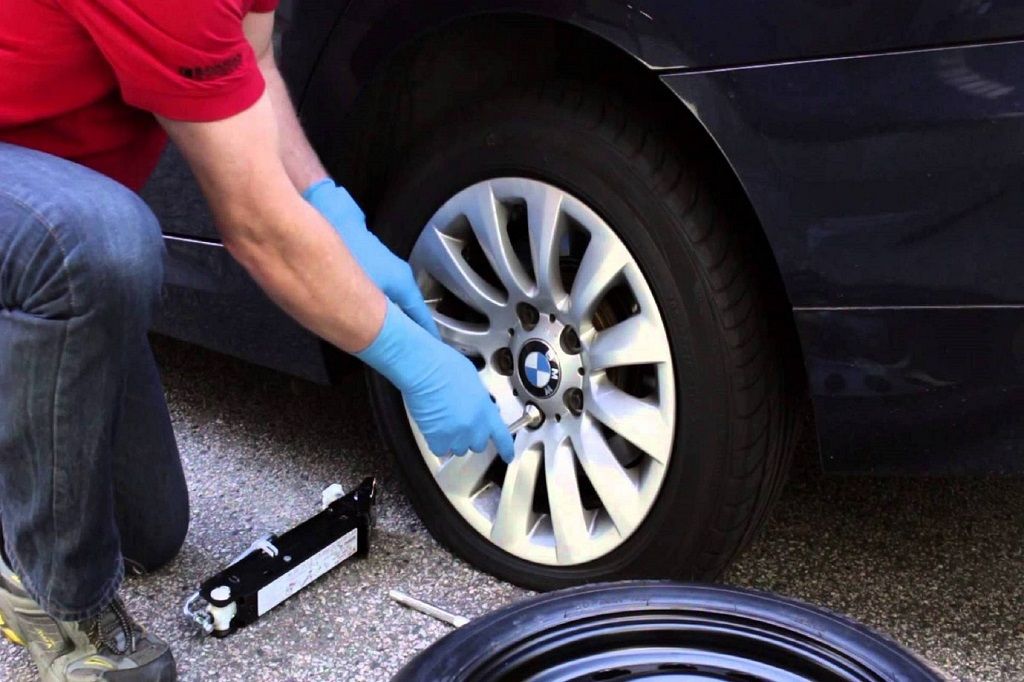 That’s why driving on a flat tire can be disastrous for tire rims, and you may have to replace them along with the tire once you are done with the drive.
That’s why driving on a flat tire can be disastrous for tire rims, and you may have to replace them along with the tire once you are done with the drive.
It’s Bad For The Car
Driving on a flat tire also harms your car. You may end up with broken brake lines, suspension parts, fenders, and rotors.
It’s Dangerous For You
Above all, a bad tire can compromise the handling and control of vehicles. Also, the disfigured suspension and brake lines may lead to an accident.
You May End Up With An Unusable Tire
If you check the manual for your tires, you’ll find adequate guidance from the manufacturers on what the proper pressure is, and when to change to a spare.
But when you drive on a flat tire, even a small puncture courtesy of damaged roads and stones may aggravate to the point that it won’t be repairable if pushed too far.
Ideally, a one-fourth-inch puncture in diameter on the tread is repairable. Still, sidewall punctures, internally damaged tires, and tires with massive cuts need to be replaced.
Still, sidewall punctures, internally damaged tires, and tires with massive cuts need to be replaced.
Even though it’s not possible to tell exactly when you’ll get a flat tire, but if you notice that the tire pressure is not on-point, get it fixed ASAP.
Follow these steps to delay flat tires, and use your tires to their full potential:
Buy The Best Quality
Naturally, you should invest in the best tires out there – make sure they are well-suited for your car, as well as local weather for where you live. You have an option between summer tires, winter tires, all-season tires, and the safest and most efficient run-flat tires.
The idea is to have a tire with a quality tread compound, so even if things go south, they can be forced to work harder than average tires.
Run-flat tires are an excellent option if you want to avoid being stranded with a flat tire. These are built with an additional compound that keeps the tires sturdy even when flat, so you can drive on them safely.
Check Your Tires Before Heading Out
When on the road, tires have to face rocks and potholes and so much more – this can damage the tread and deflate the tires over time.
This is why it is a good idea to thoroughly examine the tires before heading out. This can significantly limit the chances of you ending up stranded on the curbside with flat tires.
If your car is relatively new, you can notice if there is reduced pressure on your tires by referring to the TPMS (Tire Pressure Monitoring System).
Chaos creeps in when least expected, so you should always be prepared for the worst. Taking the following measures should help:
The bottom line is, there is no telling when you may end up with a flat tire, and the chances are you may have to drive on a flat as a last resort.
If you have run-flat tires, that won’t be an issue, but assuming you don’t — drive at a low speed, maintain it, and don’t go past a few yards.
Photo credit: Toa55/Shutterstock
The absence of a spare wheel or a standard "roll-in" seriously complicates the situation. If the driver has the skills, you can put a temporary patch on the puncture, otherwise you will have to order a tow truck.
We recommend carrying a spare wheel, a repair kit for various occasions, the necessary tools, then you can get out of any traffic situation with dignity. If all this is not there, then you can drive on punched rubber a short distance to a service station or tire fitting. We are not talking about hundreds of kilometers of travel, we are talking about a short distance.
Leakage of air from a car tire can occur in different situations. At the same time, punching is not necessary, there are other unforeseen and unpleasant situations. Most common:
At the same time, punching is not necessary, there are other unforeseen and unpleasant situations. Most common:
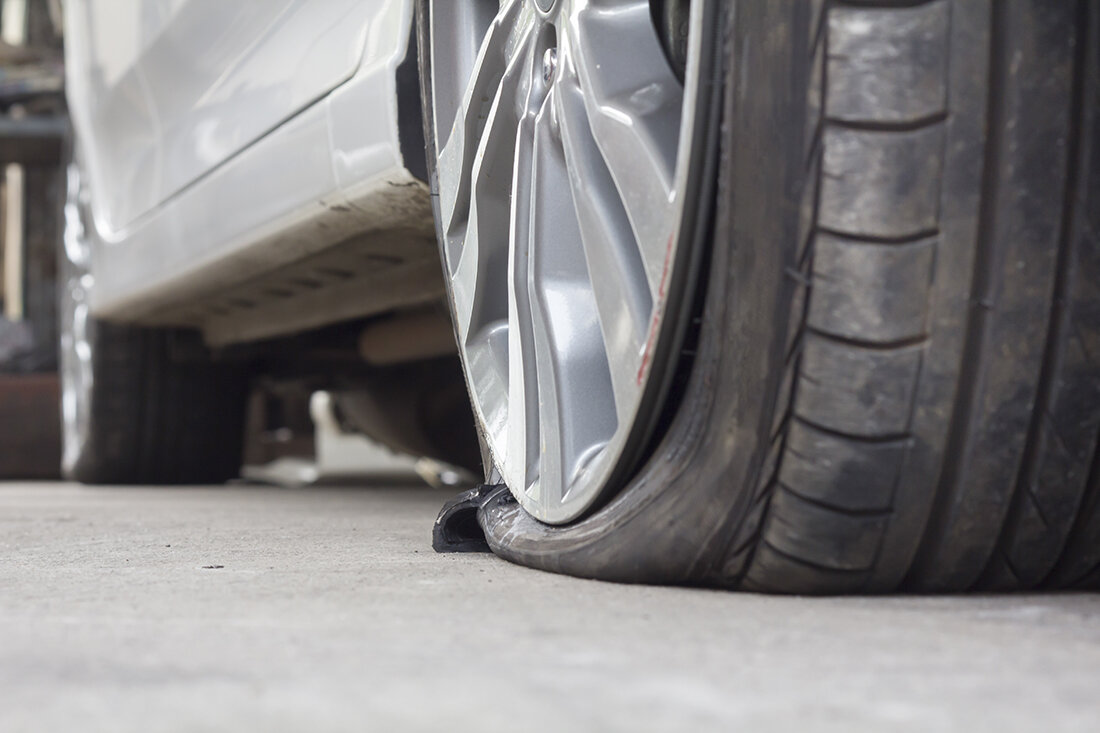
Potholes or bumps in the road can be a serious problem. Hitting such an obstacle at high speed can lead to deformation of the car disk, subsequently to damage to the rubber. Very serious damage, which is impossible to fix on your own, without the use of special equipment, you need to go to a tire service.
Use of used car tires - adhere to manufacturer's specified service life. Otherwise, the wheel may deflate due to high wear. There is a risk of explosion directly during operation.
Problems exist with tubeless tires - the fitting sometimes does not fit well on the disc, air leaks.
The main causes that lead to damage to car tires and air leakage are indicated. Whether it is possible to drive on a flat tire is determined by the driver himself, taking into account his experience and capabilities.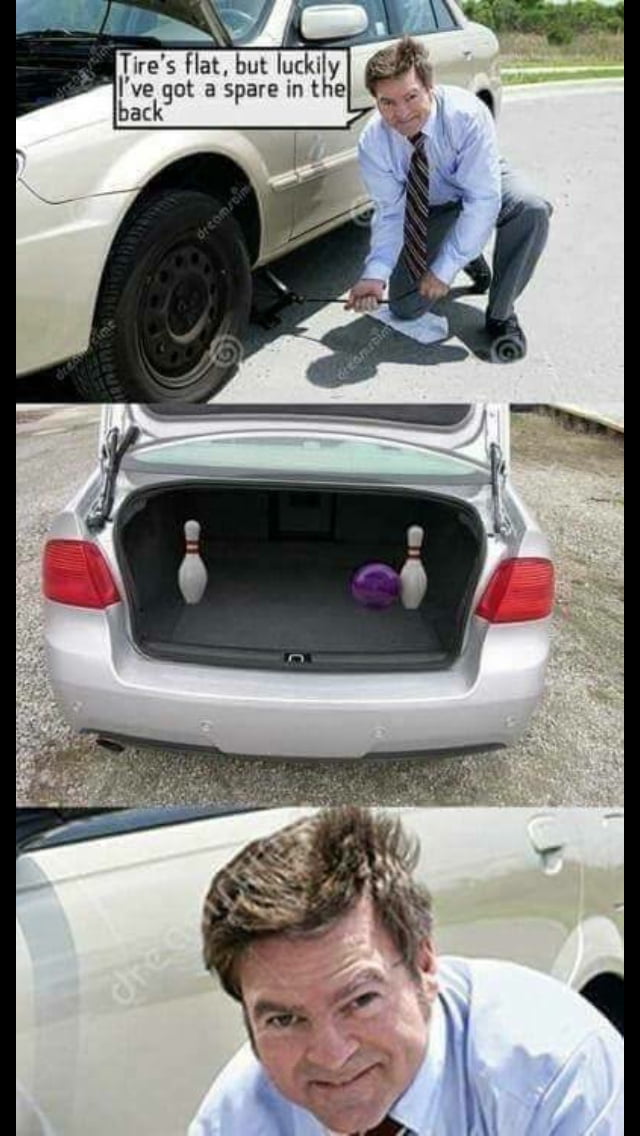
Driving with a flat tire is not recommended. Driving a car is significantly more difficult, there is a risk of getting into an accident, creating a threat to other road users.
Among the main problems that can lead to driving with low tire pressure are:

A flat tire is a serious hazard. Each driver must understand this and take all necessary measures to eliminate the problem. In no case should a puncture be ignored, at high speed the situation can completely get out of control. The ideal would be to replace the wheel with a spare, repair at the nearest tire shop.
A car tire is a complex system. Consists of different elements. Manufacturers use special technologies and materials to provide the declared driving characteristics of the car. The special pattern on the main part of the tire has its own functionality, and does not serve solely for beauty. Any deviation from the norm leads to a decrease in the functionality of the tire, respectively, the car loses its qualities. Its use becomes unsafe until the problem is solved.
Summer Drive Protection Sound Comfort
Rating:
4.5
Tires Goodyear Eagle F1 Asymmetric 3 SUV
Summer Drive protection
Rating:
4.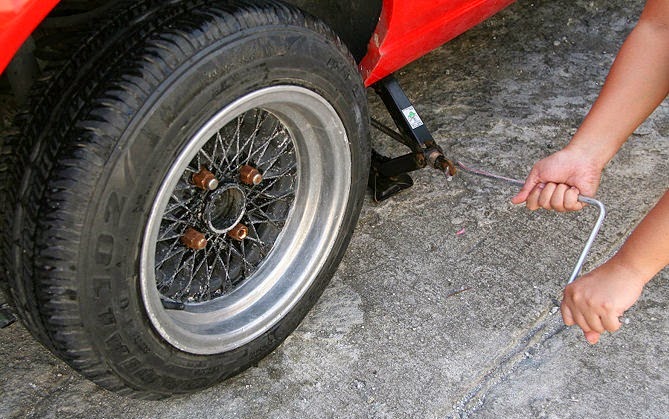 5
5
Tires Goodyear Eagle Sport TZ
Summer Drive protection
Rating:
4.5
Tires Goodyear EfficientGrip 2 SUV
Summer Drive Protection Run On Flat
Rating:
4.5
Tires Goodyear EfficientGrip Performance
Winter Drive protection
Tires Goodyear UltraGrip Arctic 2 SUV
Winter Drive Protection Sound Comfort
Rating:
4.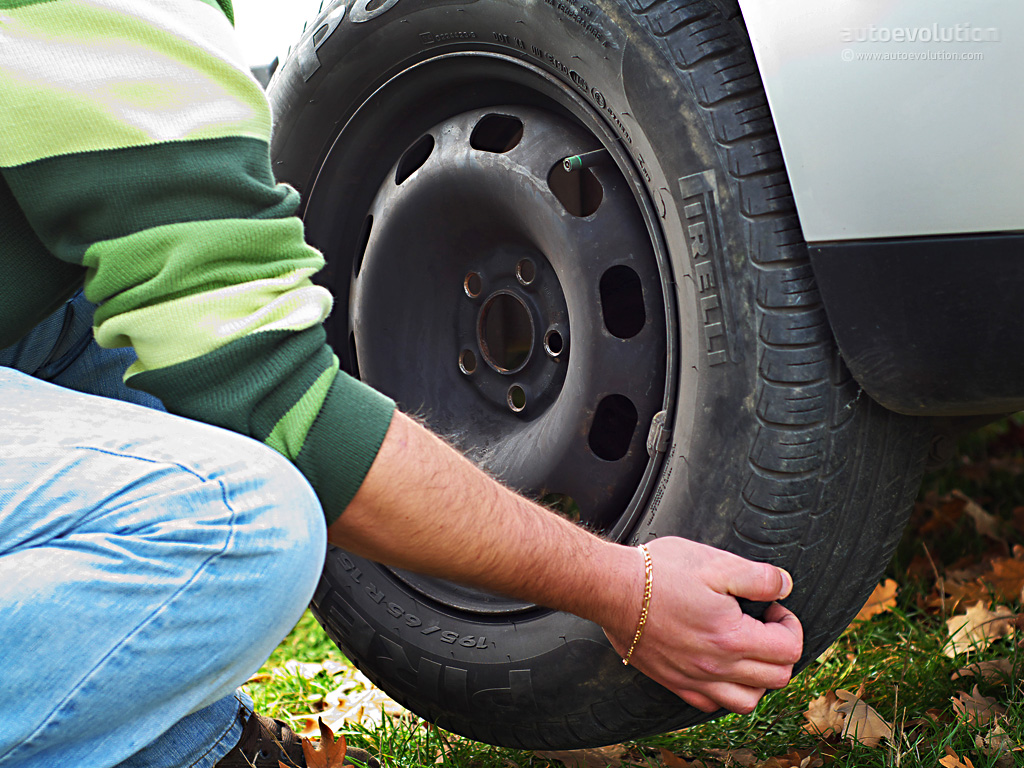 5
5
Tires Goodyear UltraGrip Ice 2
Winter Drive Protection Sound Comfort
Rating:
4.5
Tires Goodyear UltraGrip Ice SUV
Winter Drive protection
Tires Goodyear UltraGrip Performance+ SUV
All season Drive protection
Rating:
5
Tires Goodyear Vector 4Seasons Gen-3 SUV
Summer Drive Protection Run On Flat
Rating:
4
Tires Goodyear Wrangler HP All Weather
All season Drive protection
Rating:
4.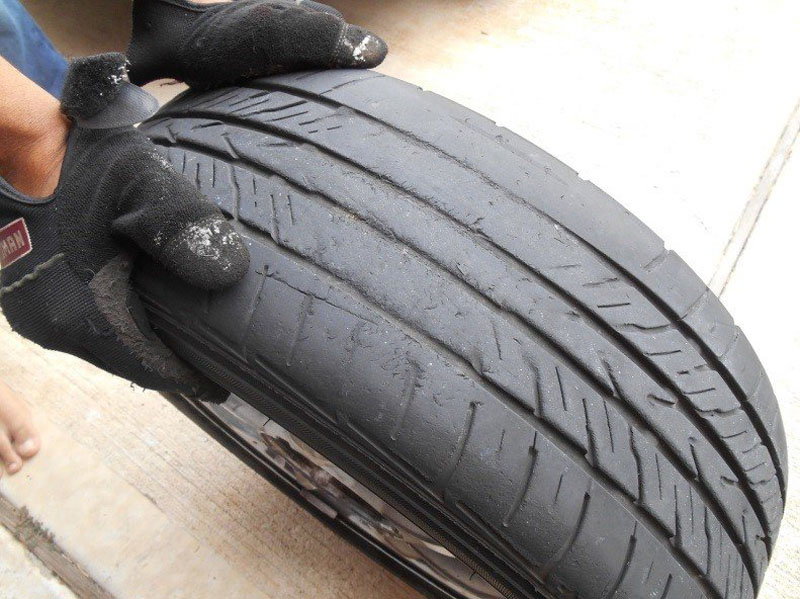 5
5
Tires Goodyear Vector 4Seasons
Summer
Rating:
4.5
Tires Goodyear Wrangler All-Terrain Adventure with Kevlar
Summer Drive protection
Rating:
4.5
Tires Goodyear EfficientGrip SUV
Summer Drive Protection Run On Flat
Rating:
4
Tires Goodyear Eagle F1 Asymmetric SUV
It is worth noting that under no circumstances should you drive with a completely flat tire.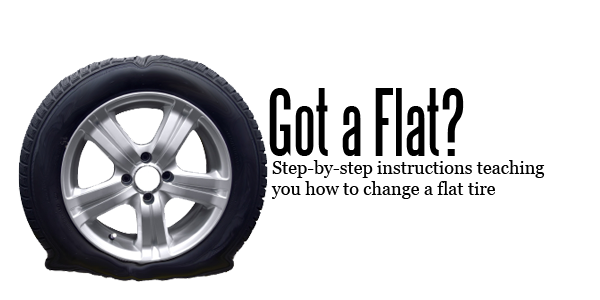 The situation can get out of control of the driver at any time, the tire will fly off the disk, he will receive damage that will lead to new problems. It's best to call a tow truck, no matter the cost.
The situation can get out of control of the driver at any time, the tire will fly off the disk, he will receive damage that will lead to new problems. It's best to call a tow truck, no matter the cost.
An exception to the rule may be a tire in which some air is still left. You can try to get to a service station or tire fitting. You can also try to inflate the tire to give yourself more time.
Low pressure driving is possible subject to the following rules:
The average distance allowed to drive with a half-flat tire is 10 kilometers. This is only allowed if the above rules are observed.
If the problem of low tire pressure, puncture or other damage is not addressed in a timely manner, it will lead to negative consequences.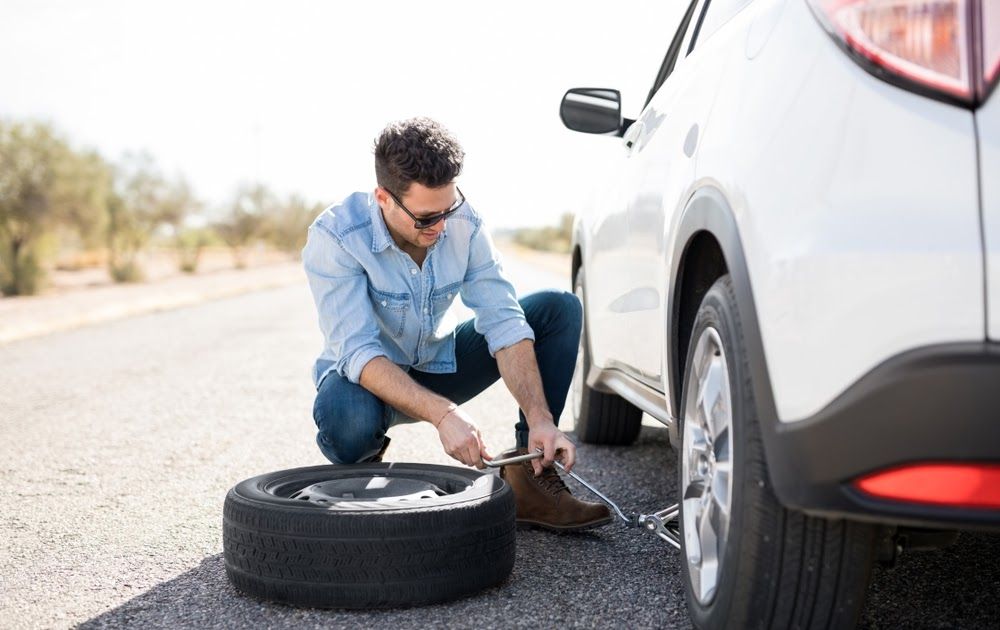 There may be problems with the operation of the following systems:
There may be problems with the operation of the following systems:
A car with flat tires is a danger to other road users and its driving characteristics are affected.
It must be understood that movement with insufficient pressure leads to deformation of the rubber. You run the risk of completely damaging the tire, subsequently replacing it with a new one. Therefore, the decision to drive on half-flat tires must be made carefully, carefully evaluate all the consequences and alternatives.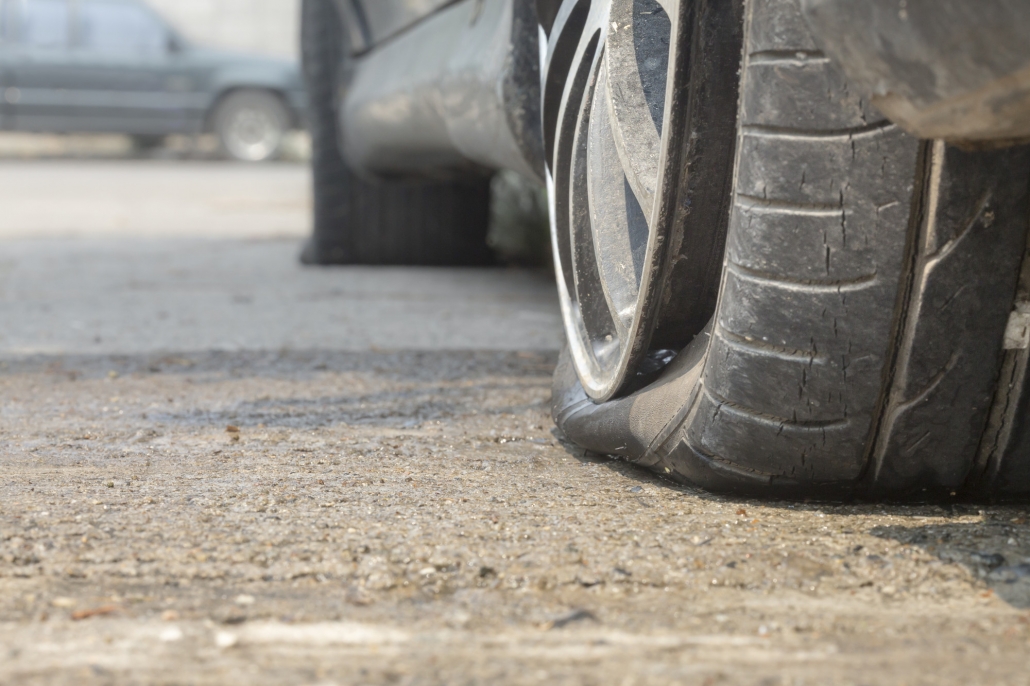 For example, estimate the cost of replacing, repairing other damage with the price of a tow truck or calling a mobile tire fitting team.
For example, estimate the cost of replacing, repairing other damage with the price of a tow truck or calling a mobile tire fitting team.
The maximum speed on a car with a half-flat tire depends solely on the characteristics of the tires, the type of vehicle, and other nuances. When accelerating to a speed of more than 30 km / h, complete disassembly is possible, the tire flies off the disk.
We recommend that you have a spare wheel with you, which is supplied with the car by the manufacturer, a repair kit. You will be able to revive the wheel for a while, it will not deflate and it will be possible to get to the tire fitting.
Issues covered in the material:
On the road, a motorist may encounter a number of unexpected and unpleasant situations. A punctured wheel promises considerable difficulties if the car does not have a spare wheel or special chemicals that can temporarily tighten a puncture in a tire. Can you drive on a flat tire? Let's take a closer look in our article.
A punctured wheel promises considerable difficulties if the car does not have a spare wheel or special chemicals that can temporarily tighten a puncture in a tire. Can you drive on a flat tire? Let's take a closer look in our article.
Tubeless tires are the safest option and are found on most cars today. If a puncture occurs, then the pressure in the tire does not drop immediately, but persists for some time. There are many examples when drivers did not notice for several months that a nail was stuck in one of the tires. However, this situation is only possible in the case of minor damage. A tube tire, on the other hand, instantly loses pressure when damaged. If this happens at speed, it is extremely difficult to avoid an accident. Car owners are advised to choose safe tubeless options.
Feeling the car skew, any driver will rush to check the flat tire and figure out what exactly happened to the punctured tire. The main reasons for this situation are:
 If a sharp object gets under the wheel while driving, a puncture may occur in the tire. Most often, on a flat tire, you can go to the nearest car service. On the road, you may need to pump up the tire, although sometimes it does without it.
If a sharp object gets under the wheel while driving, a puncture may occur in the tire. Most often, on a flat tire, you can go to the nearest car service. On the road, you may need to pump up the tire, although sometimes it does without it. 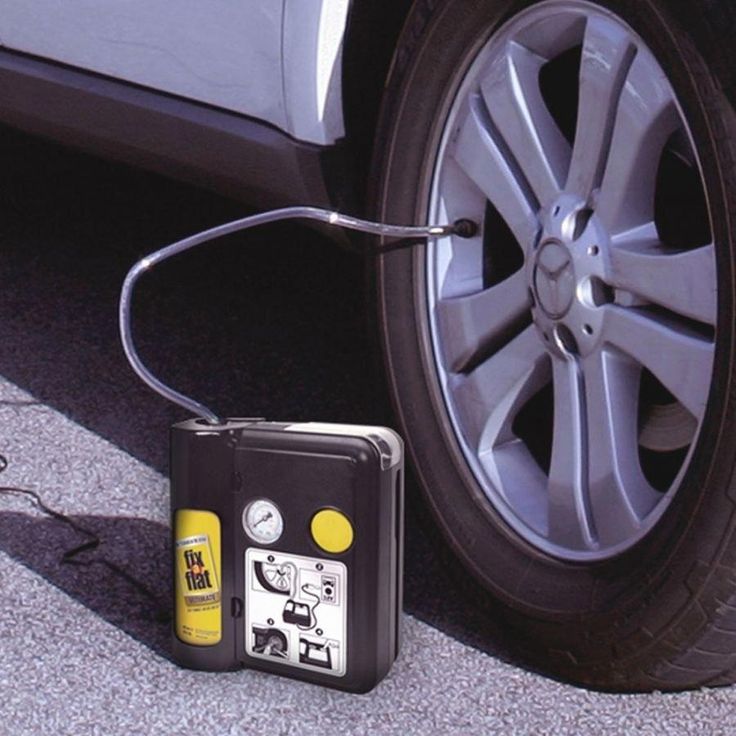
Understanding what causes a flat tire can be tricky. The situation when the tire looks intact, but at the same time passes air, can be ambiguous even for specialists. But there are several ways to solve this problem. The first thing they usually do is inflate the tires 1-1.5 atmospheres more and determine by ear exactly where the air comes out. If the method did not help, then you can apply a soapy solution to the protector and side parts. Where bubbles begin to form, you should look for a puncture. In addition, you can put the wheel in the water completely. It happens that in the removed state the wheel does not descend, and when installed on the car, it immediately loses pressure. In this situation, you need to remove the tire from the disk and run a rag over its inner surface. If there is any protruding object, even a small one, the fabric will catch on it.
It happens that in the removed state the wheel does not descend, and when installed on the car, it immediately loses pressure. In this situation, you need to remove the tire from the disk and run a rag over its inner surface. If there is any protruding object, even a small one, the fabric will catch on it.
Driving with a flat tire is a rash decision that endangers traffic safety. The driver should not ignore such a problem as a breathable tire. Most often, the tire resources are enough to take a short trip to the nearest car service. Do not postpone the arrival at the tire shop, so as not to aggravate an already critical situation.
The tire is a complex structure, not a homogeneous piece of rubber. The tire consists of several layers responsible for a particular characteristic. The technology and features of the material of each element are different and have their own nuances. The tread pattern is applied to the tire not for visual effect. The location of the grooves and grooves is specially calculated for the best functionality. The optimal tread pattern is the result of numerous tests. A flat tire immediately loses its functionality, its characteristics are reduced.
The location of the grooves and grooves is specially calculated for the best functionality. The optimal tread pattern is the result of numerous tests. A flat tire immediately loses its functionality, its characteristics are reduced.
If you drive with a flat tire, the following situations may occur:
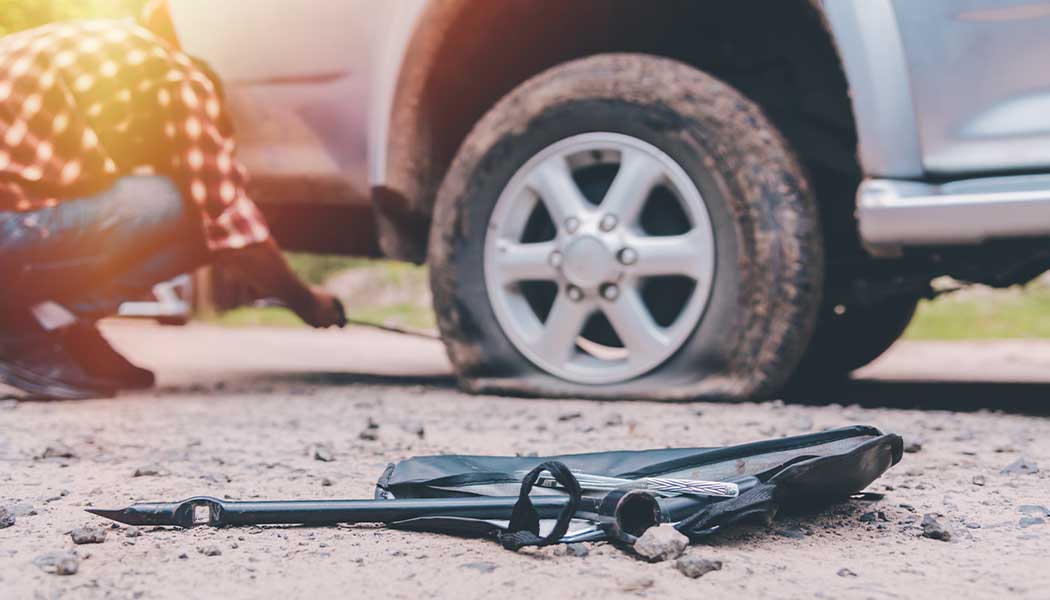
If you decide not to change a flat tire right away, but go to a car service later, you should be prepared to accept the consequences of such inaction:

Whether it is possible to drive with a flat tire depends on the degree of tire damage. If the tire is still holding air, then getting to a car service is quite realistic. When the driver does not have the necessary materials to repair a completely flat tire, all that remains is to call a tow truck. Do not think that circumstances will allow you to drive to your destination on a flat tire. Better not to tempt fate.
Tires made using Runflat technology have reinforced sidewalls, due to which the tire does not come off the rim and reliably holds the weight of even a 2-ton car. But even such a wheel after damage needs to be repaired. You can drive with a puncture on Runflat at a speed of no more than 80 km / h, the total length of the path should ideally not exceed 100 kilometers.
There is a more advanced version of these tires. Manufacturers not only reinforce the cord, but also put polyurethane half rings. This is done for additional stability in case the car gets into a small traffic accident.
This is done for additional stability in case the car gets into a small traffic accident.
Running on RunFlat tires is not as perfect as it might seem. It is enough to read the comments of the owners of "puncture-free" tires on specialized automotive forums. The main negative aspects that are mentioned in most comments: excessive rigidity and poor handling. Runflat is not a cheap product, but for owners of expensive cars, this criterion is not significant. Driving on Russian roads on runflat tires is not a good idea. Shaking on such tires is felt very intensely, large bumps are felt especially sharply. A coarser cord does not hold traction well. Because of this, the response from the steering wheel slows down, and vibrations are transmitted to it more easily. This is especially noticeable when cornering.
Driving on run-flat tires is like giving up comfort and handling. Manufacturers of such rubber, in order to reduce the negative effects of tires, are advised to install them only on cars with a suspension prepared for bad roads. In addition, wheels with Runflat tires are very noisy.
In addition, wheels with Runflat tires are very noisy.
Another nuance is more critical: few car services, with the exception of those located in large cities, can provide services for the restoration of "padded" rubber. If you plan to travel to distant Russian regions, then be prepared for the fact that the local tire shop will not be able to help you. Do not count on the masters from the sidelines. The spare tire, unfortunately, is not included in the Runflat kits.
The consequences of a puncture are eliminated according to the following scheme:
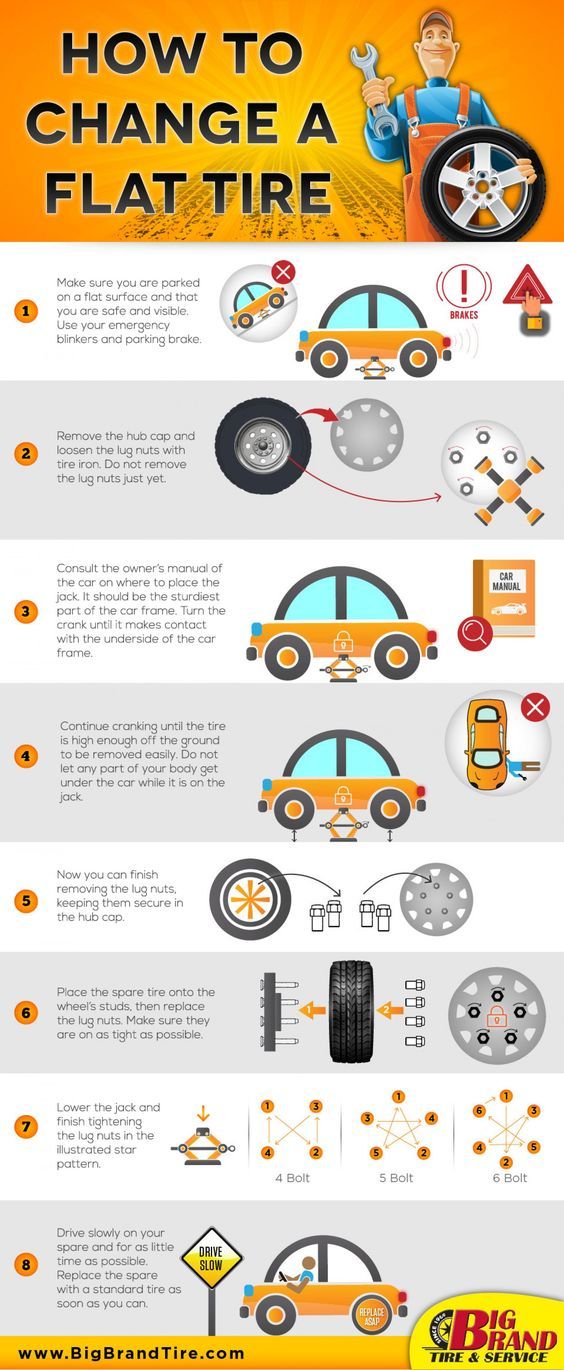 Firstly, it is more convenient to work with a well-inflated tire. Secondly, it is easy to determine the puncture site by the hissing sound.
Firstly, it is more convenient to work with a well-inflated tire. Secondly, it is easy to determine the puncture site by the hissing sound. If the flat tire is at the front, the tire can be easily accessed by simply turning the steering wheel in the desired direction. From the rear axle, the wheel will have to be removed for repair. After eliminating the consequences of a puncture, the tire is put back in place and checked how well it retains air.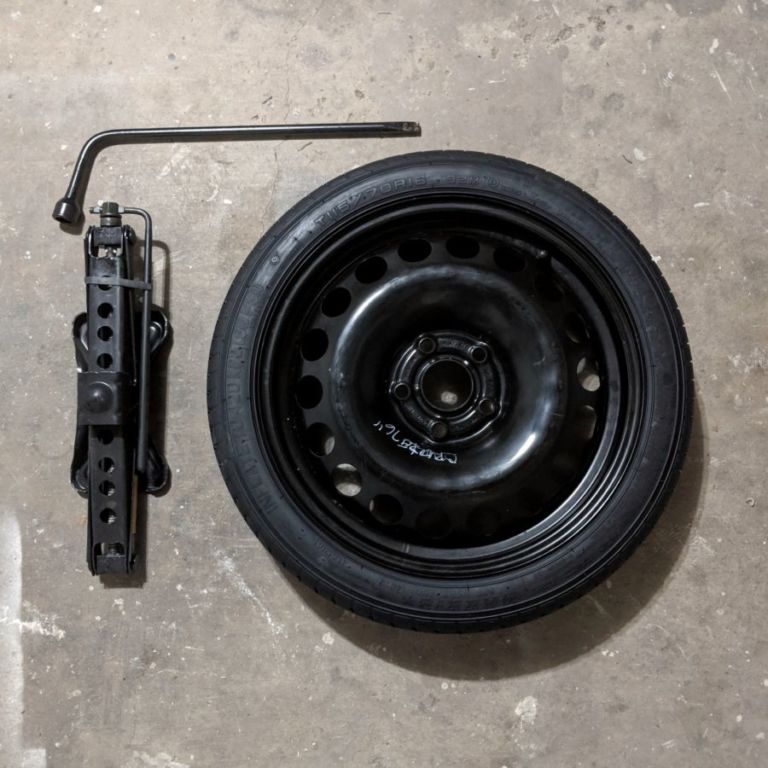 If the hissing sound is no longer heard, then you can safely go to the car service. Although some car owners stop at the above procedure, considering it sufficient. Experience shows that a puncture sealed in this way does not interfere with the further operation of the car.
If the hissing sound is no longer heard, then you can safely go to the car service. Although some car owners stop at the above procedure, considering it sufficient. Experience shows that a puncture sealed in this way does not interfere with the further operation of the car.
When a wheel is cut, a different tactic is used. This damage is more serious than a puncture. Such a problem can arise after a collision with a sharp object or when meeting with hooligans. In the event of a cut, it is better to immediately put the spare tire on, and take the flat tire to the service station. Masters will check the depth and volume of the cut. Depending on this, a decision will be made on the repair or its inexpediency.
It happens that the sidewall is strong, while other models are like a rag. You need to look at specific tires.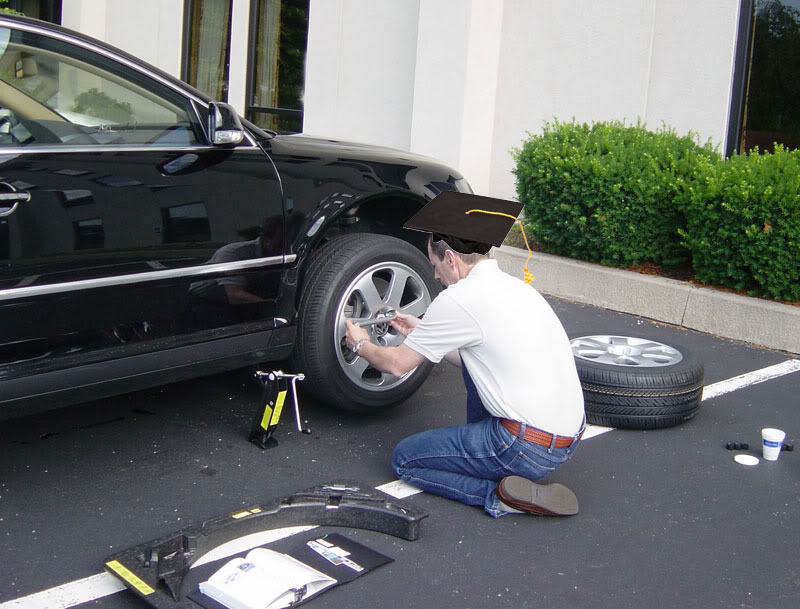
What to do with a punctured wheel
I drove about 500 km on this Goodear Eagl F1 215/55. I used it for 2 seasons (I threw it away because it was worn out), but I always put it on the rear axle, just in case. So advice - if the wheel is good, put it back. And yes, it is better not to go more than 130 km / h.
The disc can be badly damaged
Driving 8 km on one rim is a bad idea, there will be little left of rubber and disc. Visually, it seemed that it was completely deflated, although there may have been some miserable pressure. And so if the disk is even and the tires are in good condition, you can go, but it is advisable to put such wheels back only.
New tires are very expensive. It is cheaper to constantly carry a pump with a repair kit in the car.
How to understand that the tire is flat
It was in the evening after work. Started up, left, everything is OK … I didn’t understand how it happened! I noticed that I let go of the steering wheel, and the car drives slightly to the right. Correct - again leads away. I took my mother, she, when she passed the wheel, did not see anything remarkable. We drove, got stuck in a traffic jam, it’s hard to notice something here. Then there was a moment when the wheel knocked while driving on ice. I decided that I would take a look later. In the end, in this traffic jam, even the hand was tired from the constant turning of the steering wheel. I could not stand it, I could no longer go further, so I went out to see what was there. I was knocking snow off the mudguards and saw that the right front wheel was in a terrible state! It's a miracle that the disc was not bent with this type of tire. Then I tried to find the same tire to replace, but to no avail. I ended up having to go and get a new set.
Started up, left, everything is OK … I didn’t understand how it happened! I noticed that I let go of the steering wheel, and the car drives slightly to the right. Correct - again leads away. I took my mother, she, when she passed the wheel, did not see anything remarkable. We drove, got stuck in a traffic jam, it’s hard to notice something here. Then there was a moment when the wheel knocked while driving on ice. I decided that I would take a look later. In the end, in this traffic jam, even the hand was tired from the constant turning of the steering wheel. I could not stand it, I could no longer go further, so I went out to see what was there. I was knocking snow off the mudguards and saw that the right front wheel was in a terrible state! It's a miracle that the disc was not bent with this type of tire. Then I tried to find the same tire to replace, but to no avail. I ended up having to go and get a new set.
Reading time: 5 minutes
It is unlikely that you will be able to insure against a tire puncture on the road, but it is quite possible to be prepared for an unpleasant situation. To avoid serious worries and solve the problem at no extra cost, key points that every motorist should know about will help.
To avoid serious worries and solve the problem at no extra cost, key points that every motorist should know about will help.
Car owners whose vehicles are equipped with a tire pressure monitoring system feel confident on the road. In the event of a puncture and a decrease in pressure in the wheel, the driver receives a warning signal about the occurrence of an unusual situation. Depending on the type of installed system, this may be a sound alert, the inclusion of a light indicator, or a graphic image on the screen of a gadget located in the passenger compartment.
If for some reason such a device is missing, there are other ways to notice what happened in time and take the necessary measures.
 But it's still possible. The rear puncture is characterized by the "wobble" of the machine.
But it's still possible. The rear puncture is characterized by the "wobble" of the machine. Any of the above signs are the consequences of tire damage.
Sometimes you have to drive a hundred or two meters before you find a suitable place to stop. In such a situation, you should not feel sorry for an already damaged tire and try to stop in the middle of the road, creating a threat to vehicles traveling behind and nearby. There is no need to even doubt whether it is possible to drive on a flat tire.
The most prudent thing to do is to cross the necessary part of the road and stop in a place where you can do the inspection without disturbing anyone.
After stopping and inspecting the tires, it is important to decide what is the easiest and fastest way to fix the problem.
For the sake of objectivity, it is worth recognizing that without proper skill and certain experience, it is rather problematic to replace a wheel.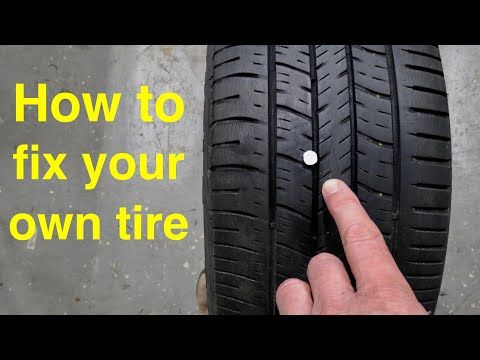
The arriving team will provide fast, qualified assistance. In the absence of a spare tire, rescuers will help to tow the vehicle to one of the car repair and maintenance centers.
The following factors can become unsightly aspects of such a decision:
Based on this, the conclusion suggests itself: the possibility of self-arrival to the technical center will help save money.
When forming a first aid kit, which is mandatory in a car for victims, you must also not forget about the “medicines” intended directly for the vehicle itself. Along with a jack and wrenches, special tools should be available to solve the problem of damaged rubber. Do not think that with the help of sealant or any other means, you can completely restore the tire, regardless of the degree of damage and the nature of the "wound".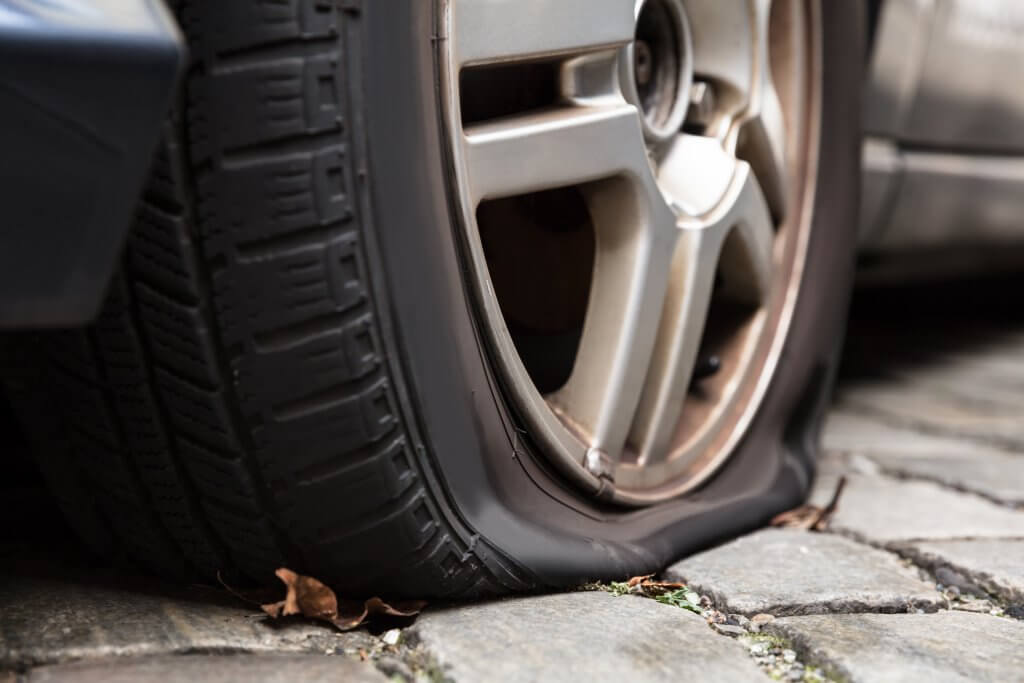 Of course, this is not true. The manufacturer gives a guarantee for the use of funds in the following cases:
Of course, this is not true. The manufacturer gives a guarantee for the use of funds in the following cases:
If all the points are met, then you can use the product in stock. To do this, perform the following manipulations:
Sealants contain substances whose characteristic feature is that they cure completely when exposed to air or any other gas. Thus, the chemical reaction that occurs at the puncture site ends with the formation of a kind of “plug” that prevents the tire from running down.
So that the car enthusiast does not have to worry about how far you can drive on a flat tire, tire brand manufacturers offer their customers new and improved technologies. Thanks to this, tires appeared that could continue to move after a puncture.
Thanks to this, tires appeared that could continue to move after a puncture.
The ability to drive "flat tire" appears with tires upgraded in one of the following ways:
Runflat tyres, unfortunately, are not without drawbacks:
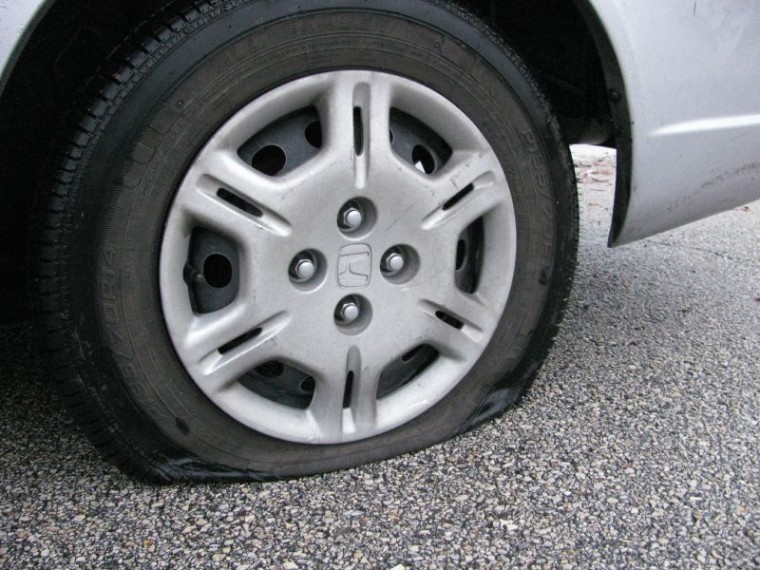
Each of the listed methods of repairing a puncture makes it possible to safely reach the auto center.
On the road, the driver may encounter various troubles and difficult situations. For example, punched tires bring a lot of difficulties to the life of a motorist. The situation is complicated by the lack of a spare wheel and chemicals that allow you to tighten a puncture in the wheel for a short time.
The driver has few options. You can call a tow truck, but you have to fork out a lot. You can also ask for help from passing drivers or try to get on your own to the nearest tire shop. It is the last option that we will analyze in detail.
There are many reasons why a tire may start to deflate. The most common situations are:

Every driver must be aware of the seriousness of the situation, so that even the temptation does not arise to ignore a leaky tire. Any delay will only exacerbate an already dangerous situation. On a flat tire, you can only drive to the nearest tire shop. But no more.
A tire is not a piece of rubber on a rim. It is a complex structure in which every detail plays its role. Automobile rubber consists of several layers. For the production of each of them, a special fiber is used and special technologies are used. Even the tread pattern is not created for beauty. A team of specialists is working on its development, numerous tests are carried out so that the functionality of the drawing is maximum.
If the wheel leaks air, then its functionality is impaired. When driving on such tires, the following situations arise:

Now you can tell whether you can drive with a flat tire. The situation is extremely clear. But what to do if there is no other way out and you really need to drive on your own to the tire station?
Next, we have to figure out how much you can drive on a flat tire and how to do it correctly. This information will be useful to every driver, because no one is immune from the occurrence of such a problem.
It is on a half-flat tire that you can cover a certain distance. If the tire is completely deflated and there is no way to temporarily resuscitate it, then the only option is to call a tow truck. Do not tempt fate and do not try to prove that it is you who will be able to do the impossible. It won't lead to anything good.
If there is some air in the tire, you can try driving to a tire shop on your own. There are a number of mandatory requirements for such a movement. If each of them is observed, then the idea will be successful, and the consequences for the car will be minimal. Driving with a half-flat tire is as follows:
Driving with a half-flat tire is as follows:
As practice shows, on a half-flat tire, you can drive an average of 10 km, only if the above tips are followed.
Consequences of driving with a flat tire
If, for some reason, you decide to postpone the replacement of tires and continue to drive with half-flat tires, then you need to be prepared for unpleasant consequences:
